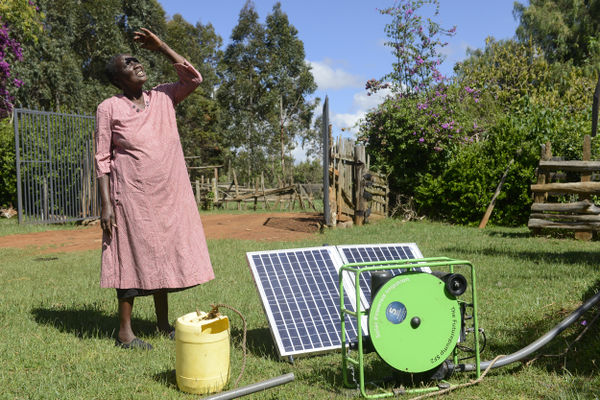Knowledge fuels change - Support energypedia!
For over 10 years, energypedia has been connecting energy experts around the world — helping them share knowledge, learn from each other, and accelerate the global energy transition.
Today, we ask for your support to keep this platform free and accessible to all.
Even a small contribution makes a big difference! If just 10–20% of our 60,000+ monthly visitors donated the equivalent of a cup of coffee — €5 — Energypedia would be fully funded for a whole year.
Is the knowledge you’ve gained through Energypedia this year worth €5 or more?
Your donation keeps the platform running, helps us create new knowledge products, and contributes directly to achieving SDG 7.
Thank you for your support, your donation, big or small, truly matters!
Semantic Sandbox
| ►Back to the WE4F Portal |
Introduction
Solar energy is the energy the earth receives from the sun, primarily as visible light and other forms of electromagnetic radiation. Solar power is among the readily available renewable energy sources on earth, but its availability and characteristics vary strongly from one region to another.
The solar power potential is highest in regions close to the equator, which overlap with many countries of the Global South. Especially in off-grid areas, the use of solar energy in agriculture, can considerably enhance livelihoods, enabling access to irrigation, cooling, drying and other agri-food processing devices. Despite the suitability of these regions for solar power and the potential to improve living standards, many barriers still hinder end users from adopting this clean energy, among others, the lack of information and access to finance. To overcome these obstacles, different approaches have been developed with the aim of mainstreaming access to solar power. Read more ...
Technologies
Depending on the solar resource potential and its quality, solar energy can serve different purposes, leading to a large diversity of solar technologies. They can be either passive or active, depending on how sunlight is captured, converted and distributed. Active solar technologies include solar photovoltaic and solar thermal systems; which convert sunlight into useful energy. Passive solar techniques involve designing buildings, materials and spaces in a way that allow optimizing the use of solar energy, such as orienting a building towards the sun or selecting materials with favourable thermal conductivity or insulation properties. Read more…
Solar photovoltaic energy can be used to power pumps in irrigation systems (see next section) , improving agricultural yields and saving costs for other fuels like diesel. It can also power refrigerators (see below), overcoming the problem of electricity shortages, which interrupt the cold chain, enhancing access to cooling equipment in ‘off-grid’ regions and reducing post-harvest losses. Read more…
Solar thermal energy is used in agri-food processes like drying. As opposed to sun-drying, solar drying avoids contamination of the harvest with impurities from the ground and increases energy efficiency. The latter can be enhanced by using photovoltaic energy to power artificial aeration systems .




















